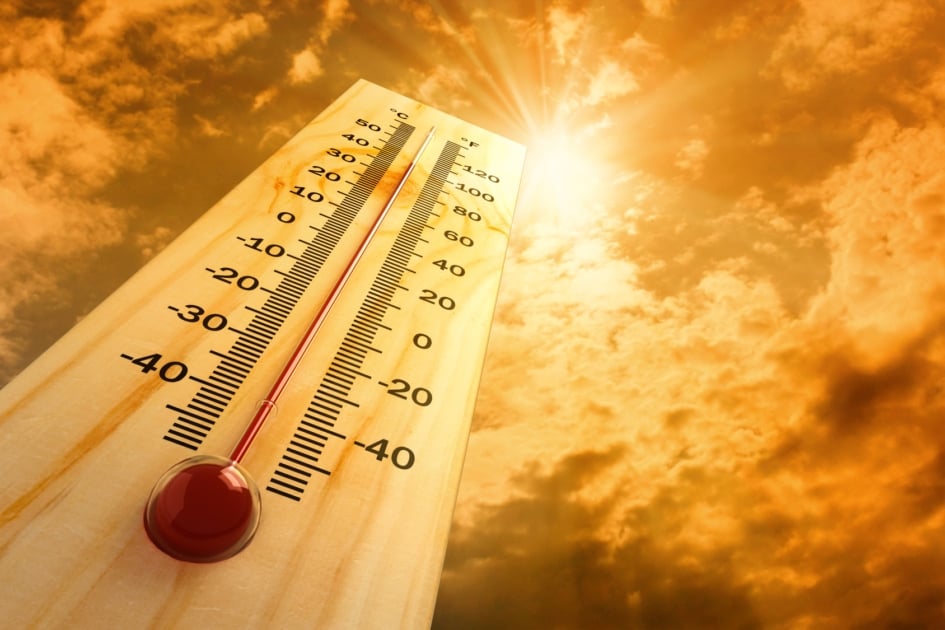Thermometers are a common piece of equipment found in nearly every home. Some of us even have multiple thermometers, each one with its own unique purpose. There are medical thermometers, weather thermometers, cooking thermometers, industrial thermometers, and more.
Just about everyone knows what a thermometer does — it measures temperature according to a predetermined numeric scale — but do you know how a thermometer works?
The most basic form of thermometer is a glass bulb thermometer, invented by German physicist Daniel Gabriel Fahrenheit in 1709. This type of thermometer is a long glass tube filled with liquid that rises and falls as the temperature changes.
Fahrenheit’s first thermometer contained alcohol, which has a lower freezing point than water. Five years later, he substituted mercury, because mercury expands at a constant rate at a wider temperature range than alcohol, and its freezing and boiling points are more extreme than alcohol’s. Mercury has continued to be the most commonly used liquid in glass bulb thermometers for more than 400 years, though governments around the world have begun recommending mercury-free alternatives, because mercury poses serious environmental and health risks.
Glass bulb thermometers work because liquids, such as water, alcohol, or mercury, expand slightly when the temperature rises. If the liquid is trapped in a narrow tube, it has nowhere to go but up. Because this expansion happens at a predictable rate, Fahrenheit was able to create a scale to determine what the air temperature would be when the liquid reached any given point on the tube. This made it possible, for the first time, for scientists to talk about temperature in exact terms. Other scientists — most notably Anders Celsius and William Thompson, also known as Lord Kelvin — invented their own scales for talking about temperature, but Fahrenheit’s was the first.
Before Fahrenheit, Galileo Galilei had invented a more primitive, if more interesting to look at, glass thermometer. Galileo’s thermometer was a glass tube filled with water and a series of weighted glass bulbs that rise to the top of the tube as the temperature falls. Each bulb represents a specific temperature range, based on its weight and how dense the water must be to hold it up. Colder air causes the water to contract, allowing more bulbs to float near the top of the tube. Because Galileo’s thermometer used water, it was unable to show temperatures below freezing, and the bulbs were a less precise measure than Fahrenheit’s simple lined scale.
Today, we have many other types of thermometers, including digital thermometers and spring thermometers. Spring thermometers use a heat sensitive piece of coiled metal that expands when the temperature rises and contracts as it cools, causing a pointer attached to the spring to move. Digital thermometers contain heat sensitive liquid crystals that send signals to the digital temperature display.
You can make your own simple thermometer at home with a few basic household items:
- Tap water
- Rubbing alcohol
- A clear plastic soda or water bottle
- A few drops of food coloring (any color will do)
- A clear plastic drinking straw
- A decent-sized lump of modeling clay, Play-Doh, or Silly Putty
Fill the plastic bottle about 1/4 of the way with equal parts of tap water and rubbing alcohol. Add in a few drops of food coloring and gently stir them in. Place the straw in the bottle, so that the bottom of the straw reaches almost, but not quite, to the bottom. Use the modeling clay to seal off the neck of the bottle and hold the straw in place.
Take your creation outside, where temperature fluctuates more than indoors. Over time, you will notice that the liquid moves up and down the straw, depending on how hot or cold it gets. You could even calibrate this simple thermometer with graduated lines. One simple way to do this would be to use another thermometer as a “cheat.” You could also bring the water just above freezing and just below boiling to determine where the water sits at these points and mark your bottle accordingly. Of course, your plastic bottle probably won’t stand up too well to being boiled.
Over time, this simple thermometer will become less accurate, as the water evaporates out of the top of the open straw. Commercial thermometers are sealed off to prevent this from happening. Some, such as medical thermometers, are even vacuum sealed so that temperature readings they record don’t drop once they are removed. To “reset” vacuum sealed thermometers, you have to shake the liquid back into its bulb.
This article was published by the Staff at FarmersAlmanac.com. Any questions? Contact us at [email protected].






